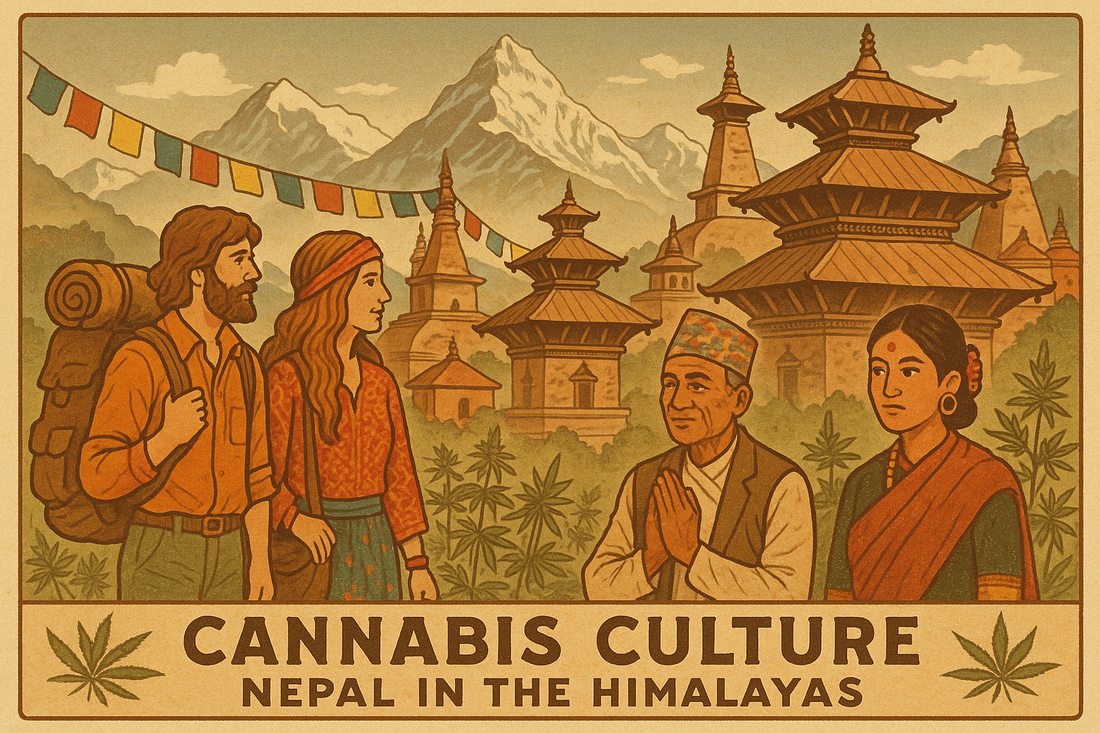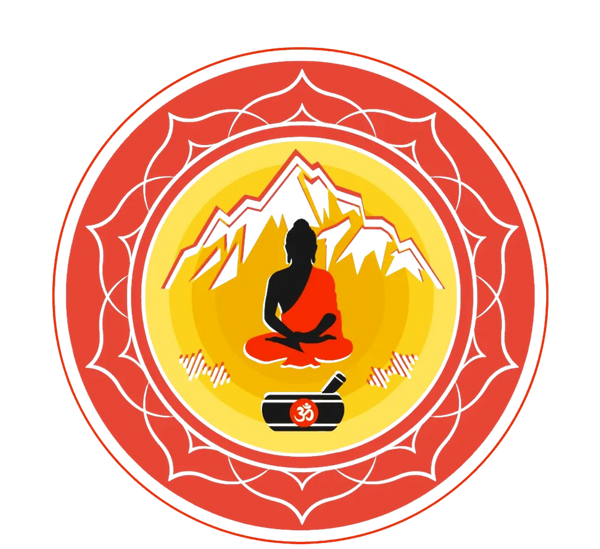
Hashish, Himalayas & Hippies: The Untold History of Cannabis in Nepal
Nepal’s relationship with cannabis is as old as the Himalayas themselves—woven into spirituality, survival, and scandal. Long before Freak Street became a global legend, holy men in Pashupatinath Temple smoked charas in sacred rituals, farmers grew hemp for ropes and clothing, and villagers chewed bhang leaves for medicine. But this ancient harmony was shattered in 1973 when Nepal’s king, under foreign pressure, banned the very plant that had been part of Nepali life for millennia.
Today, while sadhus still puff hashish openly at temples and whispers of smuggling operations echo through Kathmandu’s backstreets, cannabis remains illegal—a cultural contradiction in the land where Shiva himself is said to have embraced its power.
The Ancient Roots: Shiva's Sacred Herb
For over 3,000 years, cannabis has grown wild across Nepal's Himalayan foothills - not just as a plant, but as a divine gift. Hindu scriptures tell how Lord Shiva, the destroyer of evil, discovered cannabis's transcendental powers while meditating in the mountains. To this day, dread locked sadhus at Kathmandu's Pashupatinath Temple honor this tradition by passing Chillum (hash pipes) in sacred rituals, their eyes red from the legendary Nepalese temple balls - hand-rolled charas said to contain Shiva's blessings.
But cannabis was never just for saints. In Nepali villages, grandmothers still prepare bhang ko chutney, a cannabis paste believed to cure everything from malaria to menstrual cramps. Farmers grew hemp for sturdy ropes to build homes, while its seeds provided oil for lamps and food. During festivals like Maha Shivaratri, government shops once legally sold sweet bhang lassi to devotees - a tradition continuing today despite the ban.

Pashupatinath Temple, Kathmandu
The Hippie Invasion: When Kathmandu Was the Hash Capital of the World
By the 1960s, word had spread through the hippie grapevine: In Nepal, you could smoke the world's finest hashish - legally. Young Westerners flocked to Freak Street (Jhochhen Tole), where government-approved "hashish shops" sold sticky black charas for pennies. American backpackers traded jeans for sadhus' wisdom, while celebrities like Bob Marley allegedly stocked up on Nepal's legendary "Cream" - so pure it melted like chocolate in the sun.
The king tolerated this green gold rush. After all, tourism dollars were pouring in. At the iconic Eden Hashish Center, travelers could legally buy pre-rolled joints stamped with the shop's logo. Some say even The Beatles came searching for enlightenment (though locals insist they only made it to Rishikesh). For a brief, glorious period, Kathmandu was the psychedelic capital of the world.


Hashish and Marijuana Shops, Freak Street, Kathmandu (1960s-1970s)
1973: The Year Nepal Lost Its High
Everything changed when America declared its War on Drugs. Under intense U.S. pressure, King Birendra banned cannabis overnight in 1973. Police raided Freak Street, burning confiscated hashish in public bonfires. Farmers were forced to torch their hemp fields - a devastating blow to rural communities.
But prohibition created a dangerous irony: While foreign tourists still easily scored hash (police often looked the other way), Nepalis faced harsh punishments. The ban didn't stop the trade - it just drove it underground. Soon, smugglers were hiding hash in everything from prayer wheels to trekking gear. Some creative dealers even molded charas into religious statues, knowing customs officials wouldn't dare search sacred items.

Police destroying marijuana cultivated in Narayan Khola of Lalbandi Municipality
The Great Cannabis Paradox
Today, walk through Pashupatinath at dawn, and you'll still smell the sweet smoke of Chillum - authorities tolerate this "religious exception." Yet just outside temple grounds, police arrest locals for possession. Meanwhile, Nepal's famous hashish still circulates through whispered networks. Old-timers claim the real Malana Cream (from India's Parvati Valley) actually began as Nepalese charas smuggled across the border.
There are glimmers of change. Some politicians now advocate legalizing hemp farming to boost the economy. In Pokhara, clever entrepreneurs sell "hemp necklaces" that just happen to contain smokeable buds. And every year during Shivaratri, thousands still drink government-sanctioned bhang, winking at the contradiction.
Will Nepal Ever Reclaim Its Cannabis Heritage?
The question lingers like hash smoke in a temple courtyard: Can Nepal reconcile its spiritual past with its prohibited present? As countries worldwide legalize cannabis, Nepal stands at a crossroads - will it revive its ancient relationship with the sacred herb, or remain trapped in prohibition's shadow?
One thing is certain: Whether in the Chillum of sadhus or the hidden deals on Freak Street's back alleys, Nepal's cannabis story is far from over. After all, when something has been sacred for 3,000 years, no law can truly make it disappear.
What do you think? Should Nepal legalize cannabis again? Share your thoughts!
